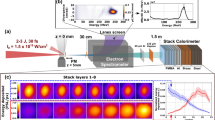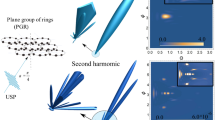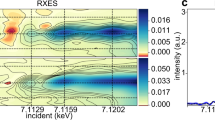Abstract
A NUMBER of experimenters have noticed that when a beam of X-rays or γ-rays traverses any substance, the secondary rays excited are less penetrating than the primary rays. Prof. J. A. Gray (Franklin Institute Journal, November, 1920) and the present writer (Phil. Mag., May, 1921, and Phys. Rev., August, 1921) have shown that the greater part of this softening is not due, as was at first supposed, to a greater scattering of the softer components of the primary beam, but rather to a real change in the character of the radiation. My conclusion was that this transformation consisted in the excitation of some fluorescent rays of wave-length slightly greater than that of the primary rays. Prof. Gray, on the other hand, showed that if the primary rays came in thin pulses, as suggested by Stokes's theory of X-rays, and if these rays are scattered by atoms or electrons of dimensions comparable with the thickness of the pulse, the thickness of the scattered pulse will be greater than that of the incident pulse. He accordingly suggests that the observed softening of the secondary rays may be due to the process of scattering.
This is a preview of subscription content, access via your institution
Access options
Subscribe to this journal
Receive 51 print issues and online access
$199.00 per year
only $3.90 per issue
Buy this article
- Purchase on Springer Link
- Instant access to full article PDF
Prices may be subject to local taxes which are calculated during checkout
Similar content being viewed by others
Author information
Authors and Affiliations
Rights and permissions
About this article
Cite this article
COMPTON, A. The Softening of Secondary X-Rays. Nature 108, 366–367 (1921). https://doi.org/10.1038/108366b0
Issue Date:
DOI: https://doi.org/10.1038/108366b0
Comments
By submitting a comment you agree to abide by our Terms and Community Guidelines. If you find something abusive or that does not comply with our terms or guidelines please flag it as inappropriate.



